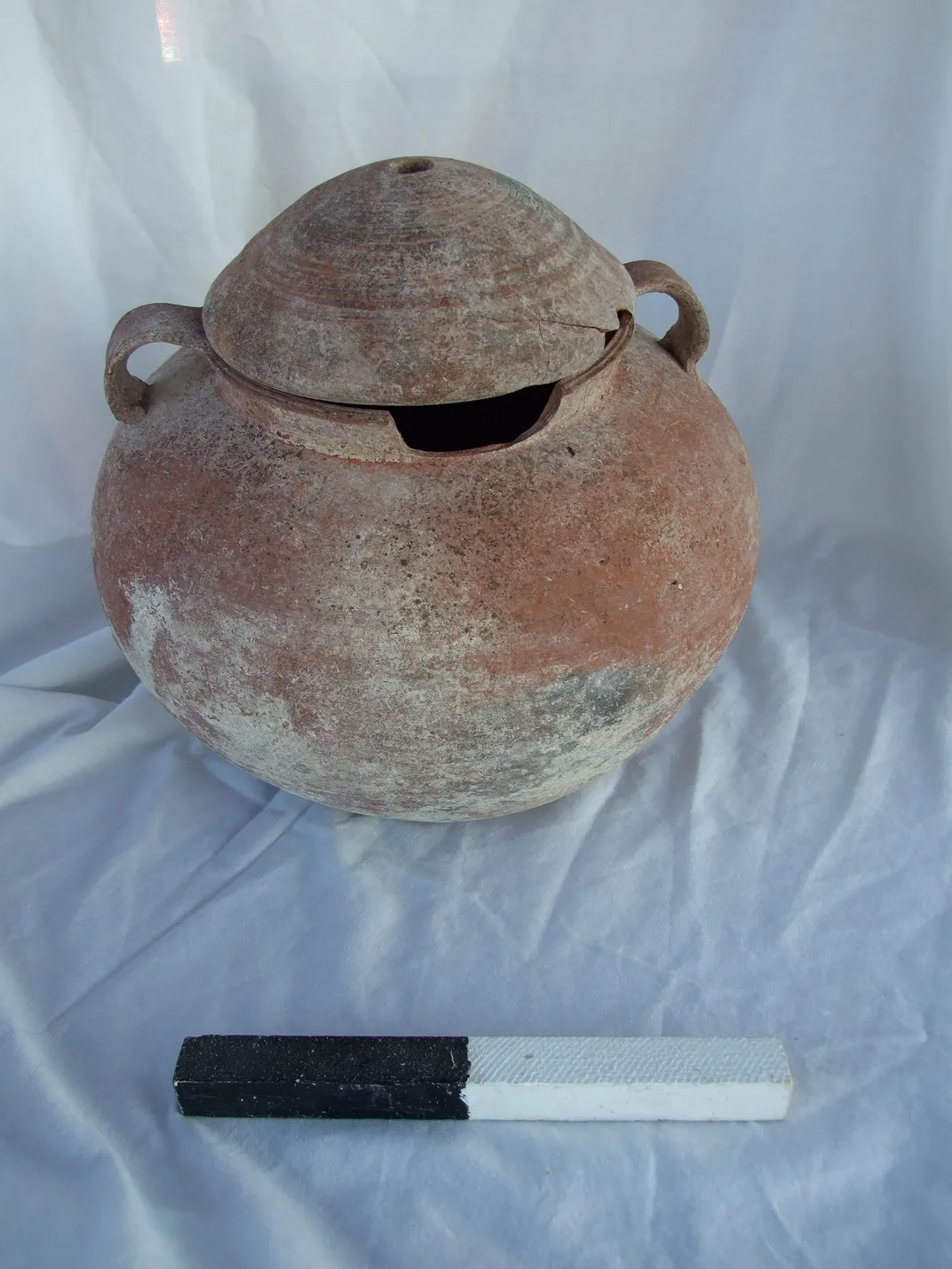Archaeologists Find Gate to Headquarters of Famed “Ironclad” Sixth Legion in Northern Israel
Inscriptions on the find imply the gate could be part of a dedication or it could list the names of the legion’s commanders or war heroes
/https://tf-cmsv2-smithsonianmag-media.s3.amazonaws.com/filer/12/00/12006842-7fd7-42fe-aed4-23d32d1a0e2c/dscf3204.jpg)
Historians have long known Rome stationed two legions in Judea after the First Jewish Revolt against Roman rule between 66 and 70 C.E. One legion was stationed in Jerusalem, but the headquarters of the other was only confirmed in 2015 in modern-day northern Israel. Now, as Philippe Bohstrom at Haaretz reports, archaeologists digging at the site of the Roman legion encampment have uncovered part of a gate to the headquarters of the fabled Sixth Legion.
Archaeologists at Haifa University and the Israel Antiquities Authority said they unearthed part of the gate to the principia or headquarters during the 2017 summer excavation season. Partial inscriptions on the finds contain names that imply the gate could be part of a dedication or it could list the names of the legion's commanders or war heroes.
The roughly 330-foot by 330-foot principia was the military command headquarters for the legion. It also served as a shrine housing the legion’s sacred eagle, whose vocalizations would be interpreted by a priest or augur to look for omens about important events or battles.
During the summer season, the archaeologists said they also discovered the latrine of the command center and found 200 coins underneath the privy. In addition, they found a small cave containing the cremated remains of a soldier in a cooking pot, a common burial practice for the soldiers.
Eli Ashkenazi at Haaretz reported that archaeologists first found hints of a military encampment in the site near Tel Megiddo, known as Armageddon in Greek, in 2013. At the time, they weren’t sure which legion it belonged to since two were stationed in the area in ancient times. Ilan Ben Zion at The Times of Israel reports that in 2015 they were able to confirm that it was home to the Sixth Legion.

Since 2013, archaeologists have uncovered streets, garrisons, sewer pipes and the outlines of the large permanent base.
“We’re talking about a large camp, an imperial camp, one of about 5,000 soldiers, about 300 meters by 500 meters [984 feet by 1,640 feet],” Yotam Tepper of Haifa University, director of the excavations, tells Zion of the Times of Israel.
The Sixth Legion more than earned its title Ferrata or “Ironclad.” First recruited by Julius Caesar in 52 B.C., it served throughout the Gallic Wars and was one of the legions participating in the victory that led Caesar to say, “ I came, I saw, I conquered.” It fought during the civil war between Caesar and Pompey. It was later transferred to Syria by Octavian “Augustus” Caesar and over the next century was bounced around across the continent. It was based in Israel in 132 C.E. when another Jewish uprising, the Bar-Kokhba revolt took place.
Bohstrom reports that by 306 C.E., however, the legion was stationed in present-day Jordan and by 400 C.E. was no longer listed in the Roman military rolls, having been either destroyed or disbanded.
The camp at Legio, however, did not see military action and was left mostly intact. “You can see that the camp wasn’t destroyed but was abandoned in an orderly way,” Tepper tells Ashkenazi. "From here they moved east across the Jordan River.”
Ashkenazi reports there were always hints that a Roman legion had once been in the area. Just take the name of the area, Legio: it's derived from the Arabic name of a local village, Lejjun, which means “legion.”